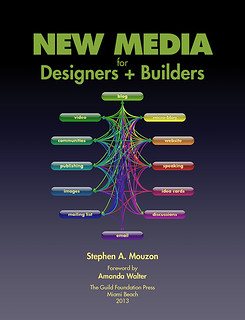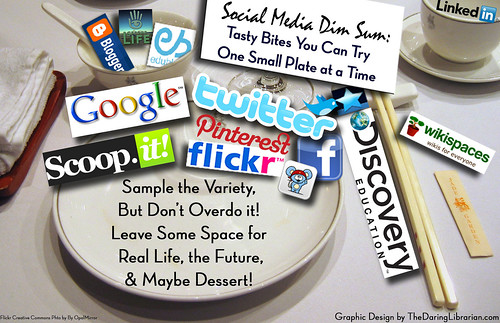Ten tips for communicating in the Age of the Idea

Posted September 30, 2013 at 1:25PM
Author and sustainable architecture sage Steve Mouzon (author of The Original Green, my favorite book of the last decade or so) believes we are now in the Age of the Idea. He also believes this is a very big deal. Here’s a quote from his new e-book, New Media for Designers + Builders (The Guild Foundation Press):
“We have all been changed in ways we could not have anticipated a decade ago. For the past 250 years, companies have dominated economic life in industrialized and post-industrial nations. Today, the Era of the Company is ending, just as the Age of the Idea is beginning. This paradigm shift is larger than anything business has seen in the past 250 years, and it won’t just affect how we do business, but it will also affect who we are.”
Later, he adds:
“While the best way of spreading a company’s influence is with a brand, the best way of driving an idea is usually with a cause.”
For myself, long embedded in a world of advocates, this last piece of advice isn’t new. But Steve (he is a friend, so I’ll use his first name) is concerned about his own world of architects and designers, who he says have been crushed so hard by the Great Recession that only half the architects who were employed five years ago are employed now.  Designers who want to succeed can no longer rely on the old virtues of quality, speed and economy, but instead must practice patience, generosity, and connectedness in a dazzling new world of lightning-quick and often self-generated media.
Designers who want to succeed can no longer rely on the old virtues of quality, speed and economy, but instead must practice patience, generosity, and connectedness in a dazzling new world of lightning-quick and often self-generated media.
As much as anything else, this means getting savvy about social media that were only beginning to be tapped when the recession hit. We now live in a world that relies much less on “experts” and much more on a network of connected entrepreneurs and do-it-yourselfers. Talented people make their own films, distribute their own music, publish their own books, replace traditional advertising with informal online communication, and copy-and-paste like crazy. (As an aside, I’ll note that this is turning the world of intellectual property rights upside down.)
The bulk of New Media for Designers + Builders is devoted to educating the design profession about how to take advantage of these new means of communication, especially social media. There are chapters on blogging, “micro-blogging” (e.g., Twitter), websites, speaking, email, images, publishing, video, participation in virtual communities, and more.
Each category has its own set of top ten rules but – gleaned from the book as a whole - here are my own top ten tips for communicating in the Age of the Idea:
- In writing, have a compelling title.
- Speak with a human voice.
- Post things that are useful to others.
- Keep content up to date.
- Admit what you don’t know.
- Be visually simple, “image-rich but graphically calm.”
- Include people in images.
- In online communities, friend and follow others freely.
- Name things for your idea, not your company.
- Employ video. YouTube has the largest search engine on the internet.
 (The eleventh tip, by the way – and this is just me – is to use new media to enhance your life, loves, and work, not replace them.)
(The eleventh tip, by the way – and this is just me – is to use new media to enhance your life, loves, and work, not replace them.)
If you’re already deeply engaged in social media, a lot of these tips may seem just like common sense. But that’s the thing about Steve’s writing: His ideas resonate precisely because they make great intuitive sense and, unlike most of us, he writes them down, and does so much more clearly than most. The result is a book that is at once simple – New Media is incredibly easy to read, with bite-sized chapters – and comprehensive.
For me, it’s not so much a step-by-step, “how-to” book; if you took Steve’s advice on every single point, you would have no time left for a day job or a family. Instead, it’s best considered a reference volume, and perhaps the best I’ve seen yet on the full range of new media. New to Twitter and wondering how to maximize your efforts? Start here. Want some tips on making, uploading, and promoting short-form video? Look at the “top ten rules of video” in New Media. My own plan is to print out the book and keep it handy on my desk.
While most ideas in New Media are common-sense and easy to execute, it’s fair to say that some are a bit sophisticated even for a social media wonk such as myself. For example, Steve recommends shooting photos in the data-rich RAW photography format and then editing them in Adobe’s full Photoshop program, neither of which I have mastered, even as an avid photographer. I’m sure I could, you know? But it’s a matter of allocating the limited hours in my days, and I choose be to content with standard JPEG photo files and more stripped-down editing software.
But that’s OK.  If you’re interested in going deep, New Media can point you in the right direction and, especially through the use of plentiful links and a companion website, send you to places for more detail.
If you’re interested in going deep, New Media can point you in the right direction and, especially through the use of plentiful links and a companion website, send you to places for more detail.
In addition to the advice that forms the heart of the book, New Media contains generous (in several senses of the word) examples of sources for blogs, websites, images, video, etc., that Steve believes represent the best of what he espouses.
The website is also where you can buy ($9.99) a PDF version of the book. Steve will, if you wish, credit the PDF amount against the purchase price of an iBook or Kindle version as they become available, which they should in a number of days.
Related posts:
- How far will we walk to go somewhere? It depends. (Steve Mouzon’s “walk appeal” concept; July 30, 2012)
- Check out our growing video library for smarter, greener communities (July 2, 2012)
- They don't build them like they used to: Steve Mouzon's Original Green (June 16, 2010)
- Urbanist bloggers who make me think (February 2, 2010)
Move your cursor over the images for credit information.
.
